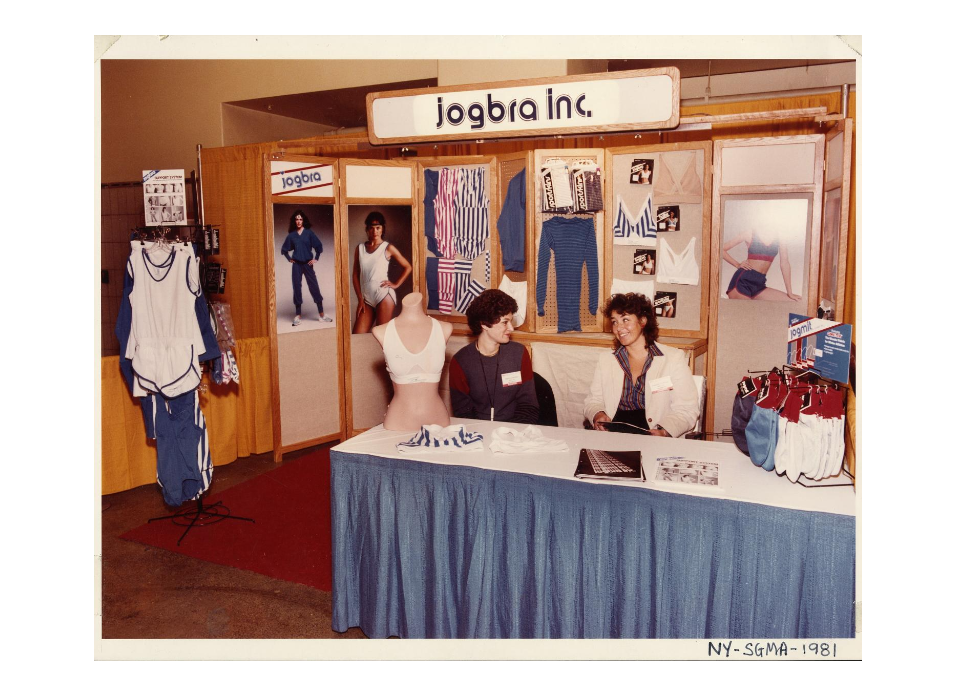The Story of the Sports Bra

Jogbra, Inc. Records, Archives Center, NMAH.AC.1315
Like many people, Lisa Lindahl took up running in the late '70s when the sport’s popularity skyrocketed. The 1972 passage of Title IX prohibiting gender discrimination in school athletics, coinciding with running's emergence as a mainstream recreational activity, led to a surge of women and girls participating in sports and, subsequently, the exposure of the male-centered sportswear industry's insufficencies.
The only athletic-specific bra on the market was the aptly named Free Swing Tennis Bra, a garment that touted its function for “the active woman who golfs, skis, bowls, skates, sails and cycles,” but who, apparently, does not run. Lindahl and other female runners jogged in conventional bras, which were woefully ill-equipped for running; they bounced, they chafed, the straps slipped, and they were full of metal hooks and wires. In an interview with the Smithsonian’s Lemelson Center for the Study of Invention and Innovation, Lindahl recalls her sister, also a new runner, lamenting, “Why isn’t there a jock strap for women?!”
So, Lindahl enlisted her friend Polly Palmer Smith, a costume designer, for help finding a bra that would meet her criteria: “…the straps would not fall off my shoulders and there wouldn't be any hardware to dig in and it would be comfortable and maybe even breathable, and it would stop my breasts from bouncing." The women combed retail stores in search of a bra currently on the market that could minimize breast movement without uncomfortable seams, hooks, or wires. Finding nothing, they sat down to create their own. It was during one of these planning sessions in 1977 that Lindahl’s husband, goofing around, pulled his jockstrap over one side of his chest and announced, “Here’s your jockbra, ladies!” And an idea was born. 
Smith set to work deconstructing two jockstraps and sewing the pieces together, teaming up with fellow costume designer Hinda Miller to create an early prototype; after some rather unscientific testing (Lindahl went for a run while Miller ran backwards in front of her to observe breast movement) Smith and Miller refined the design, sought out new materials, and in 1979 the three women were issued a patent for their athletic brassiere under Jogbra, Inc.
Beginning with those first Frankenstein-ed jock straps, sports bra development has helped make running not only more gender-inclusive but size-inclusive. The complete lack of any supportive athletic bra essentially barred larger-busted women from participating entirely: what's uncomfortable for a B- or C-cup bust could be unendurable for someone larger. And while the earliest Jogbras were still not best-suited to the needs of larger-than-average bodies (the original design was, after all, based specifically on Lisa Lindahl's running), the positive reception from consumers helped spawn a whole industry of sports bra design. Brooks, for example, partners with a research group to do biomechanical testing on a wide range of sizes to learn how different body types move, and companies like Enell, Panache, and Anita, offer size ranges up to 50DDD or GG and H cups. These innovations have opened the door to bra-wearing people of all shapes and sizes participating in high-impact activity.
Image 2: Jogbra, Inc. Records, Archives Center, NMAH-AC1315-0000027
The complete collection of Jogbra, Inc records can be found at the Smithsonian Institution's National Museum of American History Archives Center.
Connect With Us
see the latest from Fleet Feet Raleigh